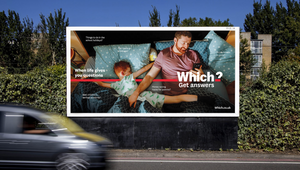
Changing Faces Calls for Brands and Agencies to Make Visible Difference More Visible

The UK’s largest brands, casting agencies and media owners are being called on to provide greater representation of people with visible differences in their broadcasts, production and advertising, through a new campaign and pledge launched today by Changing Faces.
‘A Face for Radio’, features Changing Faces ambassadors and shows that people with a visible difference have a face for anything and everything they want.
54% of people with a visible difference say that brands regularly ignore them, whilst 64% believe that adverts don’t represent people with visible differences. Yet over half of young people with a visible difference said they would spend their money on a brand that featured someone with a visible difference in their adverts.
Devised by MSQ, the UK’s fastest-growing marketing group, the ‘A Face for Radio’ campaign aims to unite as many brands, agencies and media partners as possible to ensure greater representation. An outdoor advertising campaign features joyful, vibrant images of Changing Faces ambassadors, playing on the ‘A Face for Radio’ colloquialism to show that people with visible differences can be stars of the stage, screen, billboards… wherever they want to be.

Billboards carrying the adverts will be placed in strategic sites in key locations near brands’ head offices, thanking brands for their efforts and in some cases calling on them specifically to be more representative of those with visible differences.
Meanwhile a social media campaign is encouraging those with visible differences to share their feelings around greater representation, with a film being shared highlighting some of the bright, bubbly Changing Faces ambassadors exemplifying the message.
Research from Changing Faces has shown how social media is increasingly playing a role in those with a visible difference experience hostile behaviour, with 40% experiences negative comments and 37% experiencing bullying.
Amongst those backing the campaign is TV presenter Gail Porter, acne campaigner Maia Gray, House of Dragon actor Robert Rhodes, alopecia campaigner Laura Mathias and vitiligo advocate and author Shankar Jalota. The campaign was shot by award-winning photographer Stephanie Sian Smith, who has worked for brands including Marks & Spencer, Adidas and Hervé Léger.
A further key part of the A Face for Radio campaign is the Changing Faces pledge, which encourages brands to commit to greater representation of visible differences in their promotional and marketing materials. Those signed up to the pledge will receive support from Changing Faces through connections to talent, agencies and information, as well as being featured on the Changing Faces approved partner list. Brands can find out more information and make the pledge here.

Changing Faces CEO, Heather Blake, said, “It’s time for brands, agencies and casting businesses to come together and ensure that people with a visible difference are more prominent in the media. There are too many prejudices and assumptions about people who have scars, marks or conditions that make them look different, including that they should hide their difference or be ashamed of it. We’re challenging the phrase ‘A Face for Radio’ by showing that people with a visible difference have a face for anything and everything they want to be – and already are. I’m so proud of the campaign, our ambassadors and the brands who have pledged to make a difference.”
Changing Faces helps the 1 in 5 people in the UK who have a visible difference, a scar, mark or condition on their face or body that makes them look different, providing them with services and support and greater general representation.
More than four-fifths (81.3%) of people with a visible difference have experienced staring, comments or unpleasantness from a stranger, a figure that has been steadily rising in recent years, whilst as many as 40% have said that they regularly receive bad service or are ignored by shop assistants because of their visible difference.
Gail Porter, the TV presenter, mental health advocate and campaigner who lives with Alopecia said, “Fairer representation in the media of people with a visible difference will not only go a long way to raising awareness and understanding, and reduce the sense of exclusion experienced by many people with a visible difference, it’s also a massive opportunity for brands and businesses too. The visible difference community are underserved by brands and we hope that, through the Changing Faces pledge, we can help businesses get closer to more customers and actively challenge a damaging social stigma.”















